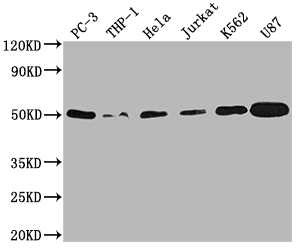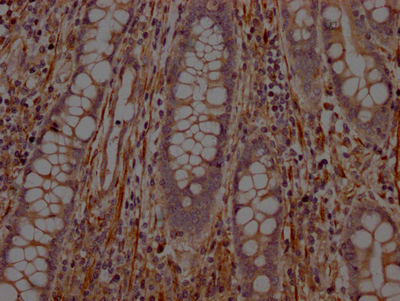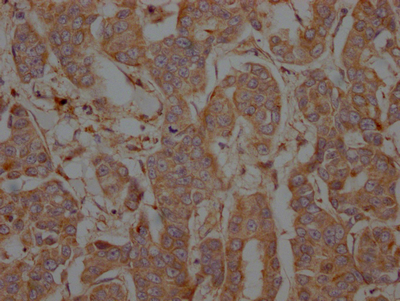The PTPN1 recombinant monoclonal antibody can be used for detecting human PTPN1 protein in ELISA, WB, and IHC assays. Its production is based on recombinant DNA technology, where the gene coding for the PTPN1 monoclonal antibody is synthesized after sequencing the cDNA of the PTPN1 antibody-producing hybridomas. The hybridomas are created by fusing myeloma cells with B cells isolated from an animal immunized with a synthesized peptide derived from human PTPN1. The synthesized gene is then cloned into a vector and transfected into cells for cultivation. Finally, the resulting PTPN1 recombinant monoclonal antibody is purified via affinity chromatography from the cell culture supernatant.
The PTPN1 protein is an enzyme that plays a role in the regulation of several cellular processes, including insulin signaling, cell growth, differentiation, and migration. PTPN1 works by removing phosphate groups from tyrosine residues on target proteins, thereby regulating their activity. PTPN1 is also involved in regulating other signaling pathways, such as the MAPK/ERK pathway, and is important for the normal development and function of various tissues and organs.








